Discover the magic of panko-crusted fish and elevate your seafood dishes to new heights. Whether you’re a seasoned home cook or a culinary enthusiast, mastering the art of panko-crusted fish is a game-changer. From crispy, golden-brown exteriors to tender, flavorful interiors, panko breadcrumbs transform ordinary fish into extraordinary creations. In this article, we’ll explore everything you need to know about working with panko, including tips for achieving the perfect crust, comparing it to traditional breadcrumbs, and diving into versatile recipes for air fryer, pan-fried, and baked dishes. Learn why panko is a favorite among chefs and foodies alike, and uncover the secrets to making restaurant-quality panko-crusted fish right in your kitchen.
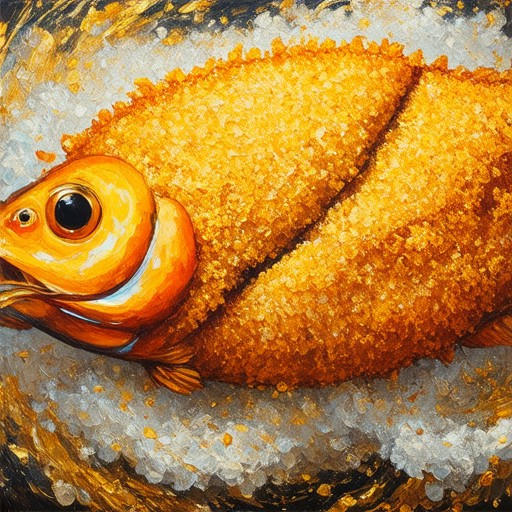
How to Get Panko to Stick to Fish
To achieve the perfect crispy coating on your fish using panko breadcrumbs, follow these steps:
- Dredge the Fish:** First, lightly dust the fish fillets with all-purpose flour. This helps the panko adhere to the surface.
- Mix Panko with Flour:** In a separate bowl, combine the panko breadcrumbs with a pinch of salt and pepper. Optionally, add a tablespoon of flour to the mixture to act as a binder.
- Egg Wash:** Whisk an egg and mix with a splash of water. Dip each fish fillet into the egg wash to ensure the breadcrumbs stick properly.
- Cook the Fish:** – **Frying:** Heat vegetable oil in a pan until it reaches 350°F. Fry the breaded fish until golden brown, flipping once. Remove and drain on paper towels. – **Baking:** Preheat the oven to 400°F. Place the breaded fish on a baking sheet, brush with oil, and bake for 15-20 minutes, or until golden and crispy.
By following these steps, you’ll achieve a delicious, crispy coating that sticks perfectly to your fish!
How to Cook Fish in Panko Breadcrumbs
At Only Fish Recipes, we believe that cooking fish with panko breadcrumbs should be a breeze. Follow these simple steps to create a crispy, delicious meal that’s sure to impress:
- Prepare Your Ingredients: Start by gathering your favorite fish fillets, panko breadcrumbs, flour, eggs, and a bowl of oil for frying.
- Coat the Fish Strips: Begin by dipping each fish strip into a bowl of flour, ensuring it’s evenly coated. Next, dip each strip into beaten eggs, allowing the excess to drip off before coating it generously with panko breadcrumbs.
- Chill Before Cooking: To ensure the breading sticks perfectly, place the prepared fish strips in the refrigerator and let them chill for at least 30 minutes. This step helps the breading set and adhere better when fried.
- Fry Until Golden: Heat a medium-sized saucepan with enough oil to reach a depth of 5cm. Once hot, carefully fry the fish strips in batches, flipping them once, until they turn golden brown and cooked through. Remove them from the pan and drain on paper towels before serving.
For an extra crunch, consider doubling up on panko breadcrumbs or tossing the cooked fish in a mix of breadcrumbs and Parmesan cheese. This method ensures a crispy exterior while keeping the fish tender and juicy on the inside.
Don’t forget to pair your fried fish with our best side dish recipes for a complete and satisfying meal. From classic seafood dishes to innovative takes, Only Fish Recipes has everything you need to elevate your fishing skills.
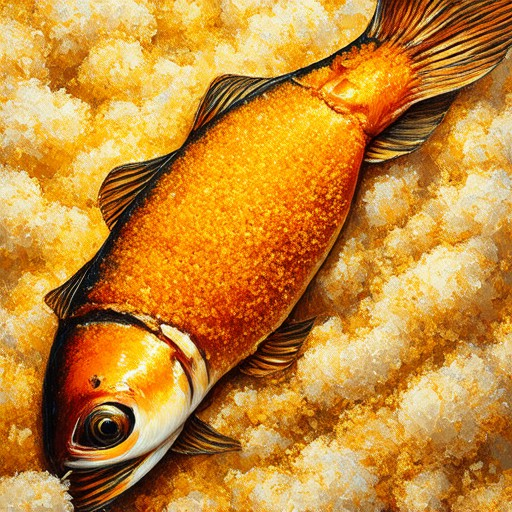
What Kind of Fish Is Wendy’s Panko Fish?
The fish used in Wendy’s Crispy Panko Fish Sandwich is Alaska Pollock, a high-quality, lean fish known for its mild flavor and tender texture. Originating from the cold waters of the North Pacific Ocean, Alaska Pollock is a popular choice for seafood lovers worldwide due to its versatility and sustainability.
Alaska Pollock is recognized for its exceptional flesh quality, which makes it ideal for preparing crispy, golden panko-coated sandwiches. Its firm yet flaky texture holds up well under the panko breading, ensuring a satisfying crunch without losing the fish’s natural moisture.
Wendy’s takes Alaska Pollock, lightly breads it in crispy panko, and serves it on a toasted bun with your choice of toppings. The process ensures the fish remains perfectly crisp on the outside while staying juicy and flavorful on the inside.
Alaska Pollock is also a great source of lean protein, making it a nutritious option for those seeking a delicious and healthy meal. Its availability and consistent quality make it a favorite among seafood restaurants and fast-food chains alike.
For more information about Alaska Pollock and Wendy’s commitment to sourcing high-quality ingredients, visit our main website .
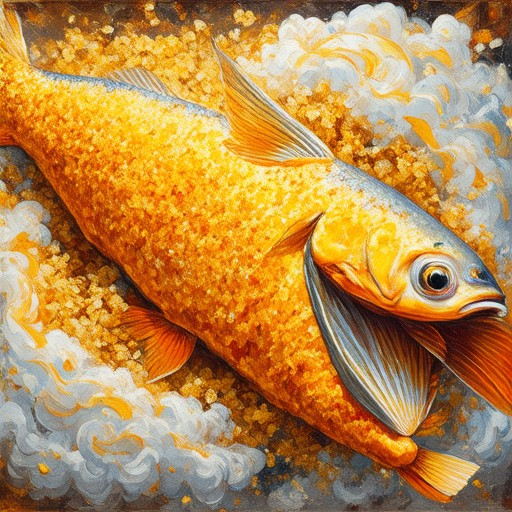
Panko Crusted
Panko crusted refers to a cooking technique where food items are coated with panko breadcrumbs, resulting in a light, crispy, and flavorful crust. This method is widely used in Japanese cuisine, particularly in dishes like chicken katsu, where tender cuts of meat are coated in panko before frying. The panko breadcrumbs provide a unique texture, offering a satisfying crunch compared to other breadcrumb options.
To create a panko crusted dish:
- Breading Process : Typically involves dipping the protein (such as chicken, pork, or fish) in beaten egg, followed by a coating of panko breadcrumbs. This ensures the breading sticks to the food.
- Cooking Methods : Commonly fried in oil until golden brown for maximum crispiness. Baking is also possible, though frying is preferred for achieving the classic crispy texture.
- Seasonings : Panko can be seasoned with ingredients like garlic powder, herbs, or spices to enhance flavor.
Common dishes featuring panko crusted include:
- Chicken Katsu : A popular Japanese dish where chicken is coated in panko and fried.
- Panko-Crusted Pork Chops : A variation on traditional pork chops with a crispy panko coating.
- Fish Cakes : Similar to katsu but made with fish, often served as appetizers or side dishes.
The use of panko breadcrumbs results in a lighter, airier crust compared to regular breadcrumbs, making it ideal for dishes that benefit from a crispy exterior.
Breadcrumbs vs. Panko
Breadcrumbs and panko are both types of breading used in cooking, particularly in Japanese cuisine, but they have distinct characteristics and uses.
Breadcrumbs
Breadcrumbs are small, crumbly pieces of bread that are typically made from leftover bread. They are known for their soft texture and ability to absorb flavors. Breadcrumbs are widely used in various cuisines for binding ingredients, such as in meatballs or as a topping for soups and salads. They can also be used to create a crunchy texture in dishes like croquettes or as a coating for fried foods.
Panko
Panko, on the other hand, are coarser, flakier, and crunchier than regular breadcrumbs. They have a much firmer texture and are less dense. Panko originated in Japan and are commonly used in Japanese and other Asian cuisines. They are ideal for creating a crispy exterior in dishes like tonkatsu (breaded pork cutlets) or as a topping for ramen noodles. Panko’s structure allows it to hold onto sauces and seasonings better than traditional breadcrumbs.
Key Differences
- Texture : Panko has a firmer, crunchier texture compared to the softer, finer crumbs of breadcrumbs.
- Origin : Panko was developed in Japan during the Edo period and is specifically suited for Japanese cooking methods.
- Usage : While breadcrumbs are versatile in many cuisines, panko is most commonly associated with Japanese and Asian dishes.
Both ingredients are valuable in cooking, but they offer distinct textures and are used in different contexts depending on the dish.

Why is Panko So Expensive?
Panko breadcrumbs are known for their coarse, crispy texture and are often used in Japanese cuisine. Despite their popularity, they tend to be more expensive than regular breadcrumbs. Here are some key reasons:
- Production Method: Panko breadcrumbs are made by cutting soft, squishy bread and then drying it, which excludes the crust. This process is less common and requires specific machinery, making it more labor-intensive and costly compared to traditional breadcrumb production.
- Texture and Demand: The unique texture of panko, which remains crisp even when soaked, makes it highly sought after in various dishes. This premium texture contributes to its higher price point.
- Market Competition: Panko faces competition from other types of breadcrumbs, but its distinct qualities position it as a premium product, allowing manufacturers to set higher prices.
- Packaging and Distribution: Specialized packaging and distribution methods may also add to the cost, as panko often needs to be kept dry and fresh, requiring more careful handling during transport.
While regular breadcrumbs are more versatile and widely available, panko’s unique properties and production process justify its higher cost. Whether you’re cooking Japanese dishes or looking for a textured crunch, understanding the reasons behind panko’s expense can help in deciding when to use it versus other breadcrumb options.

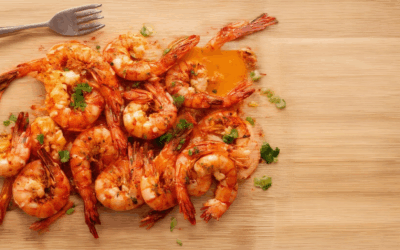
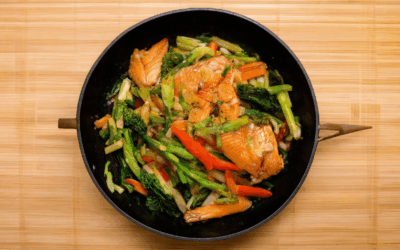

0 Comments